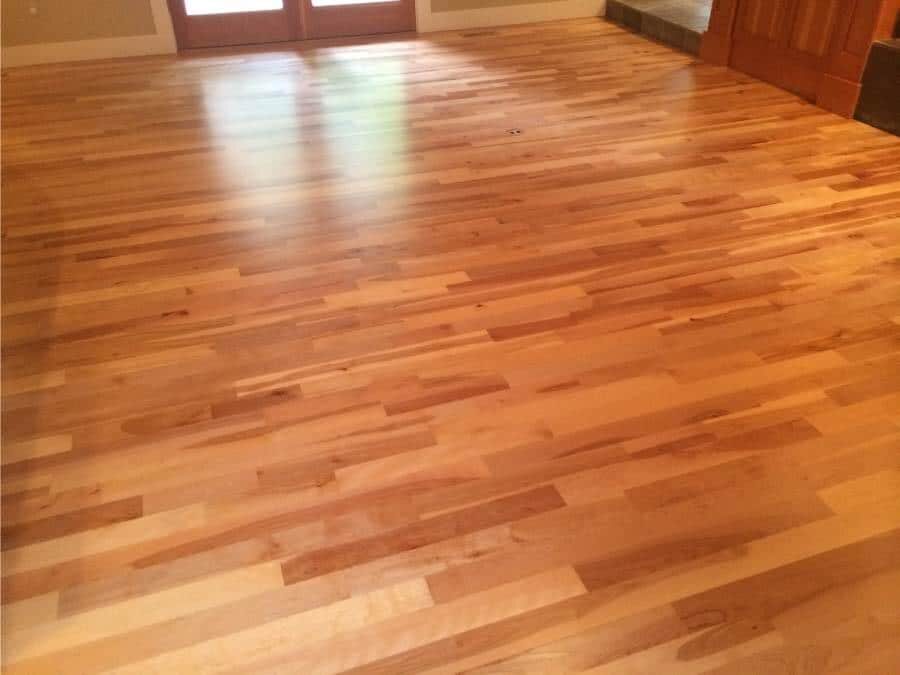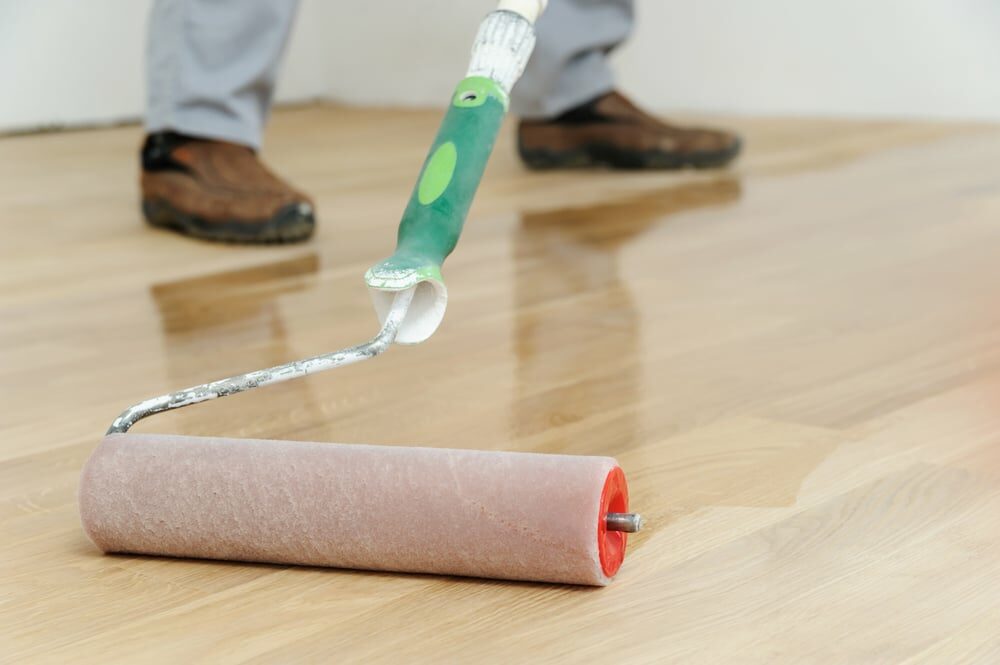London:
Nationwide:
Orbital Sanding vs. Other Floor Sanding Techniques: Which is Best?
Posted on August 26, 2023
Floor sanding techniques
Comparative Guide: Orbital Sanding vs. Traditional Floor Sanding Techniques
Pursuing a beautifully polished wooden floor is as timeless as the wood itself. The grains, the sheen, the warmth it exudes – all hallmarks of a household that is both inviting and immaculate. However, the pathway to this perfection is laden with choices. And when it comes to floor sanding, the techniques employed can make a world of difference. Enter the debate: orbital sanding versus its counterparts. Which, pray to tell, is the superior choice?
Before we delve deep into the grainy details, let us understand the art of floor sanding. Like the sculptor chipping away at marble, revealing the masterpiece underneath, floor sanding is about removing the topmost layer to uncover the pristine wood beneath. Imperfections, age marks, scratches and stains are carved away, revealing a surface ripe for staining, sealing, or simply admiring.
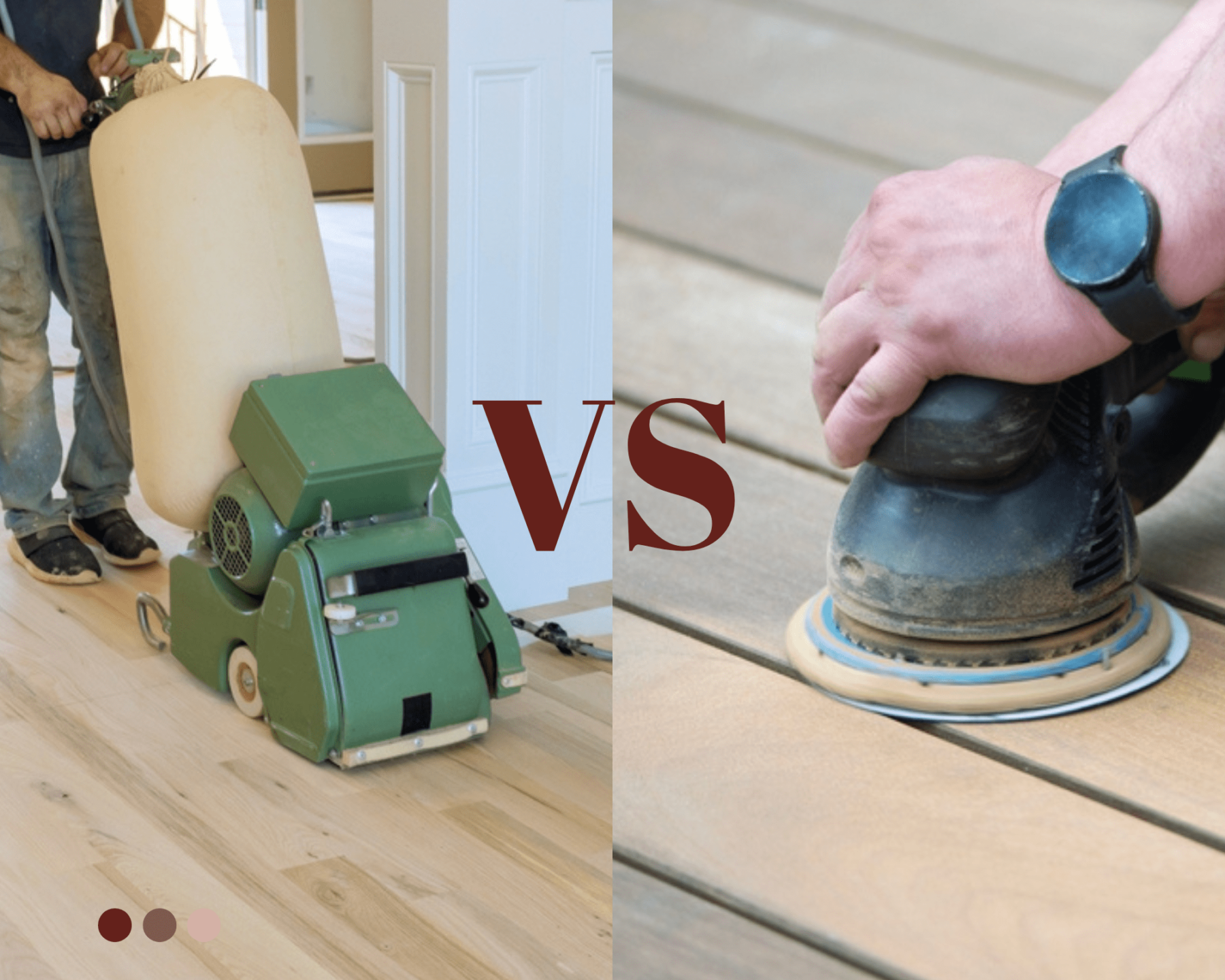
The Protagonist: Orbital Sander
An orbital sander is the darling of the DIY enthusiast and the seasoned craftsman alike. Its distinct motion – oscillating in tiny circles – ensures the sanding is less aggressive, providing more control over the task. It’s akin to a maestro painting gentle strokes, layer by layer, instead of a hasty swipe of broad colours.
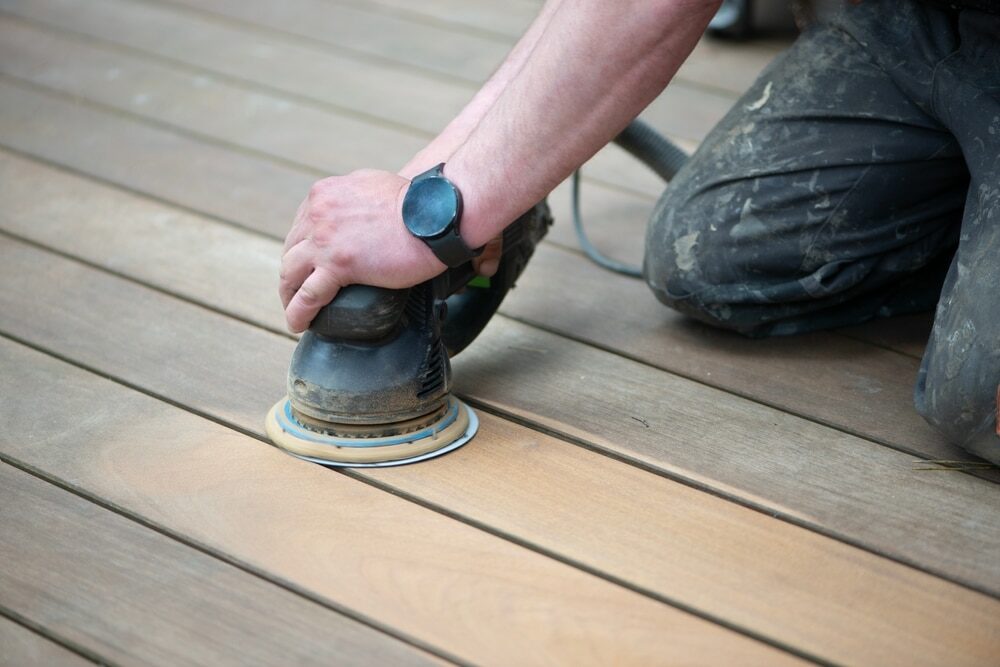
Advantages:
- Versatility: Orbital sanders, with their random orbits, minimise the risk of sanding against the grain, which can leave unsightly marks.
- Finer Finish: Due to their gentle approach, they often yield a smoother, finer finish, particularly suited for the final touches.
- User-Friendly: Perfect for beginners. The design mitigates the chance of any significant blunders.
- Dust Collection: Modern orbital sanders have efficient dust collection systems, ensuring a tidier workspace.
Drawbacks:
- Time-Consuming: The precision and gentleness come at the cost of speed. More extensive floors may seem an endless endeavour.
- Not for Deep Damage: If your floor bears the brunt of deep gouges or stubborn old finishes, an orbital sander might not be up to the task.
The Counterparts: Belt and Drum Sanders
Opposite our protagonist are the heavyweight champions: the belt and drum sanders. These are the juggernauts of floor sanding, robust and rapid, often used for initial heavy-duty sanding.
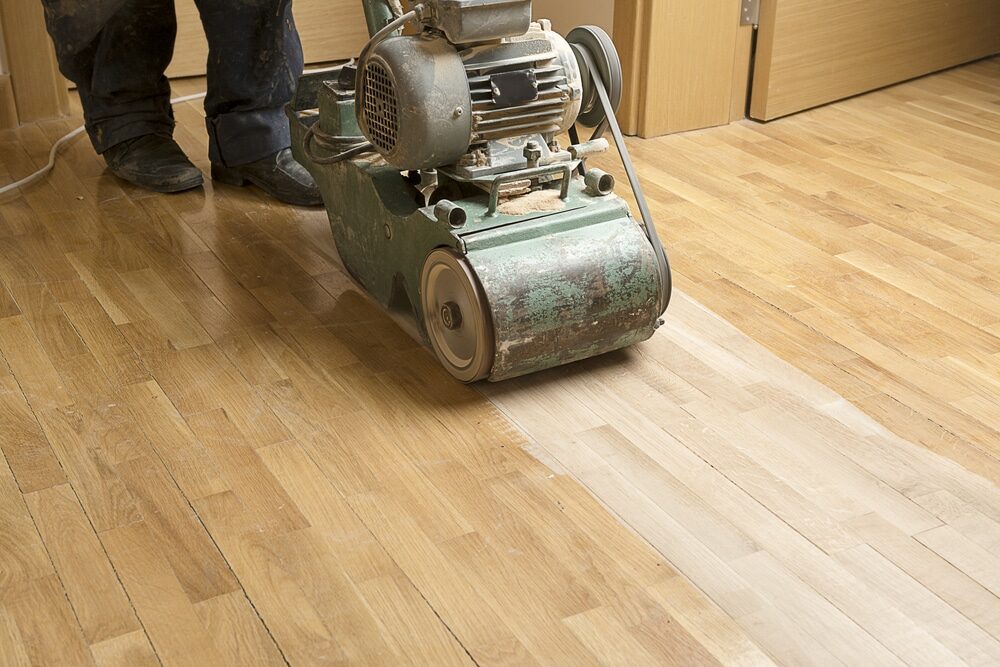
Advantages:
- Efficiency: These sanders are incredibly fast and effective at removing old finishes and deep scratches.
- Deep Sanding: These are your go-to devices if the wood requires a substantial amount of material to be removed.
Drawbacks:
- Skill Required: A drum sander, especially, can be unforgiving. One misstep and you could gouge the floor.
- Against the Grain: These machines can sometimes leave marks if used against the wood grain, necessitating a finer sanding afterwards.
- Dust Galore: Although newer models are improving, they can produce vast amounts of dust.
The Edger: An Honourable Mention
While our debate primarily circles orbital, belt, and drum sanders, one cannot discuss floor sanding without a nod to the edger. This device covers the edges, corners and other hard-to-reach spots where larger sanders dare not tread. Regardless of your primary sanding technique, an edger is an indispensable companion.
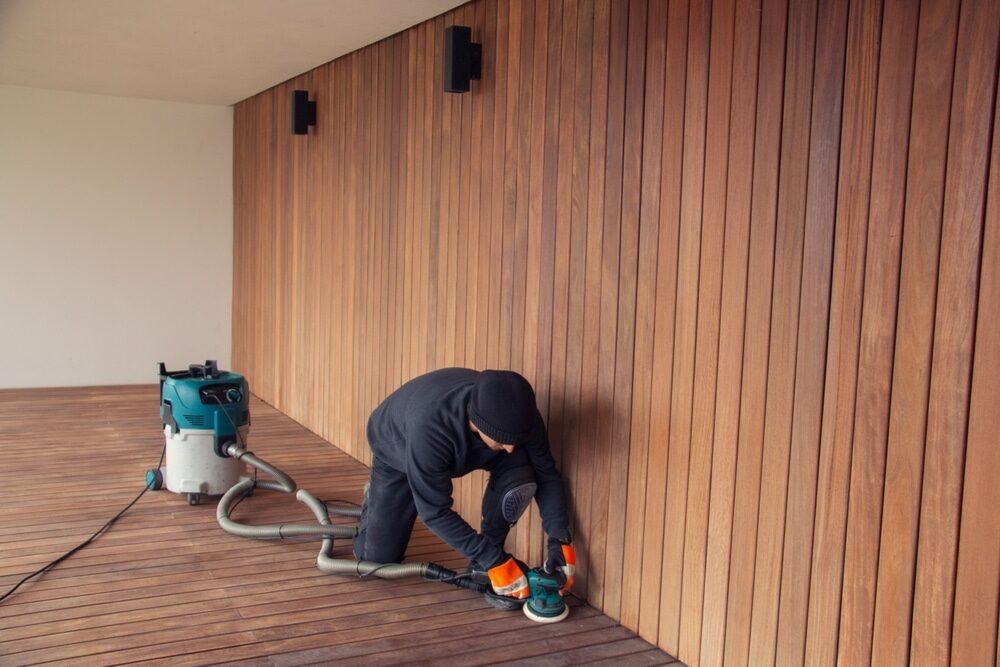
So, Which is Best?
The truth is, much like the nuanced grains of wood, the answer is not straightforward. Your choice hinges on the condition of your floor and the desired outcome.
- Beginning Afresh: If you’re dealing with a heavily damaged or old floor with a thick finish, a drum or belt sander would be your choice. Their robust power will strip away years in a matter of hours.
- The Finishing Touches: Once the heavy lifting is done, or if you seek a light refinish, the orbital sander shines brightest. Its finesse and control are unmatched.
- A Balanced Approach: A combination of both is ideal in many cases. Start with a belt or drum sander for the main surface and finish with an orbital sander to ensure a smooth, polished look.
The Evolution of Sanding Tools
The development and diversification of sanding tools, like all forms of technology, owe much to the artisans’ demands and materials’ evolution over the ages. Understanding this trajectory offers perspective on why specific tools exist and where they are best employed.
In yesteryears, floor sanding was a tedious manual chore involving nothing more sophisticated than abrasive sheets and human elbow grease. While this allowed for an intimate understanding of the wood, it was far from efficient. As wooden flooring grew in popularity, especially the more luxurious hardwoods, there was a pressing need to evolve the tools of the trade.
The drum sander emerged as an early solution, a beast of a machine that could aggressively strip floors, making quick work of what would have taken days by hand. But with its power came challenges. Its aggressive nature often led to irreparable errors, which is why the more controlled belt sander found its niche.
However, the perfectionist’s was realised with the invention of the orbital sander. Here was a tool that blended machine efficiency with the finesses of manual sanding. Its random orbital motion allowed for a kinder touch, making it challenging to over-sand or damage the wood, providing that much-coveted balance between speed and subtlety.
Understanding Wood Types and Their Needs
Each wood type has its characteristics, from oak to mahogany, pine to walnut. Some woods are softer and more pliable, while others are robust and dense. The choice of sanding tool, thus, should also take into account the kind of wood you’re dealing with.
Softer woods can be easily gouged if a sanding technique is too aggressive, making the orbital sander a natural choice. Harder woods, with deep-set stains or aged finishes, might require the initial heft of a drum or belt sander before the orbital sander is introduced for the finishing touches.
Additionally, historical or vintage floors often have their tales to tell. They might be bearing witness to past sanding endeavours, old adhesive residues, or even historical restoration attempts. Here, understanding the wood sage and previous treatments becomes pivotal in a judicious combination of sanding techniques.
In essence, while the tools at our disposal have become more advanced, the key to a perfect finish still lies in understanding the material’s nuances, the floor’s history, and the desired outcome. The artistry in floor sanding is as much about knowledge as it is about technique.
Conclusion
As with all art, floor sanding requires power, finesse, aggression, and gentleness. The key lies in understanding the character of the wood beneath your feet and choosing your tools accordingly after all, as Raymond Rubicam would likely concur, it is not just about selling a technique but about ensuring a legacy of beautiful floors for generations to enjoy.

Sanding
We provide virtually dust-free sanding with our continuous belt machinery with mobile extraction units, giving you a safer environment for your family.
Oiling
This organic finish not only adds beauty to your home but also has exceptional water-repellent characteristics, making it easier to clean and maintain.
Waxing
This natural floor finish offers the softest and most mellow appearance – and leaves your floor able to breath.
Buffing
Using soft buffing machines (and hand-polishing where required) will bring a wonderful sheen to your newly-finished floor.
Repairs
We offer a full assessment of your wooden floors to determine what repairs are needed to provide the perfect working surface for the later stages of sanding, staining and sealing.
Restoration
We offer a comprehensive restoration process designed to address floors that are improperly fitted or damaged over time through wear and tear.
Request a fixed price quote for your wood floor restoration now
Simply enter your postcode below to get started.
Services
Wood Floor Sanding Wood Floor Restoration Wood Floor Scratch Repair Squeaky Wood Floor Repair Parquet Floor Sanding Parquet Floor Restoration Commercial Floor Sanding Church Floor Sanding Community Centre Floor Sanding School Floor Sanding Gap Filling Gap Filling with ResinCopyright © Mr Sander®
Privacy & Cookies Terms & Conditions Complaints Procedure Cancellation Rights Sitemap